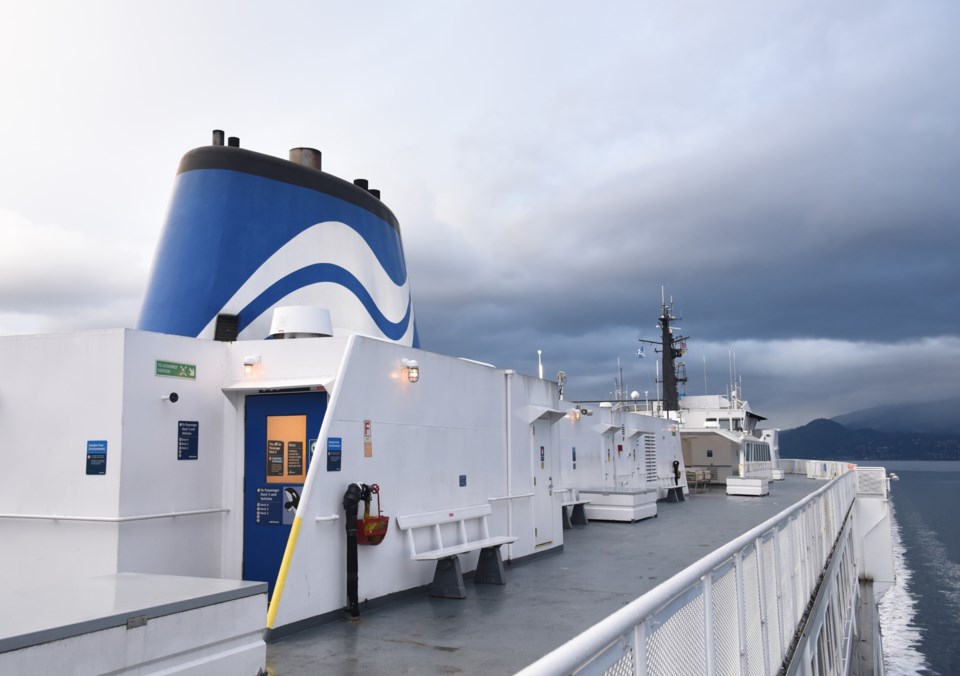Both September and July this year saw an increase in vehicle traffic on BC Ferries routes compared to pre-pandemic levels in 2019.
Across all BC Ferries routes, there was a 15.71 per cent increase in vehicle passengers in September 2021 compared to 2020, according to BC Ferries’ monthly traffic report. On Route 3, there was an 11.45 per cent increase in September’s vehicle traffic when compared to the year before, with statistics showing 109,944 vehicles for the month in 2021 and 98,646 for the same time period in 2020.
Diana Mumford, the chair of the Southern Sunshine Coast Ferry Advisory Committee, compares this year’s traffic statistics to 2019, before the pandemic affected travel.
“2019 was a very good year for ferries,” Mumford said, “because it had been growing steadily and 2019 was kind of the peak.”
When compared to 2019, there was a 6.91 per cent increase in vehicle traffic across all BC Ferries routes in September, with a jump from 810,524 to 868,554 vehicles. Walk-on passenger counts still have not reached pre-pandemic numbers.
For the Sunshine Coast’s route between Langdale and Horseshoe Bay, September saw a 5.03 per cent increase (a difference of 5,399 vehicles) compared to the same month in 2019, when there were 104,545 vehicles.
Route 3 also saw an increase in vehicle traffic compared to pre-pandemic levels in July. At the time, 129,971 vehicles travelled on the route, compared to 127,173 in 2019, a difference of 2.28 per cent.
This summer, travel to the Coast may have increased in part because of the wildfires in the Interior, Mumford said. Another factor may have been when people could only travel within their health authority region earlier this year. While access to Vancouver Island was limited, residents in Vancouver Coastal Health could still visit the Sunshine Coast from the Lower Mainland and Sea to Sky areas. People may also be choosing to work remotely from the Coast, Mumford added.
Mumford said one of the frustrations she hears the most for Route 3 is about reservations. There’s less holding space at the Horseshoe Bay terminal, which leads to long lines outside of the ticketed area. Facilities before the toll booth are minimal, she said, so people waiting to get a ticket have limited access to washrooms, especially when the line is moving.
People have also expressed concern and frustration about the difficulties of booking a reservation around a medical appointment off Coast, since they may not know when the appointment will be over or when they will be able to travel afterward.
Although BC Ferries introduced an incentive to encourage people to travel on later or off-peak sailings at a cheaper rate, Mumford said it doesn’t seem to relieve the complaints she continues to receive.
Feedback about Route 3 can be directed to the Ferry Advisory Committee, which can be accessed on the BC Ferries website. The committee’s next meeting is planned for November, and will be open to the public.



